- Home
- Sandra Cisneros
The House on Mango Street
The House on Mango Street Read online
Acclaim for
The House on Mango Street by Sandra Cisneros
“The House on Mango Street is so succinct, funny, and beautiful that it is timeless. It’s poetry and song with yearning and love that we can all recognize. It’s one of those books that we will be reading and rereading for a very long time.”
—Edwidge Danticat
“Sandra Cisneros has made a difference to Latino literature; beginning with House on Mango Street, her works have conveyed the Southwestern Latino experience with verve, charm, and passion.”
—Oscar Hijuelos
“The House on Mango Street is a book that will be cherished for generations. With its tenderness, its humor, and its wide-eyed truth telling, Esperanza’s story becomes our story, whether we’re Latinas or not.”
—Cristina García
“Brilliant.… [Cisneros’s] work is sensitive, alert, nuanceful.… Rich with music and picture.”
—Gwendolyn Brooks
“The House on Mango Street has given a voice to all of us who have made the United States home, while never forgetting where we come from.… An unforgettable and indispensable book.”
—Jorge Ramos
“Sandra and her House are all things—the house, a home; the mango, a fruit; the street, a way, all in one.”
—Eduardo Galeano
“The House on Mango Street was the sort of reality-altering book that broke it all open for me. Sandra Cisneros has a voice with character, gusto, and chiseled craft. It didn’t just reach out to me because I am Latina, it insisted on reaching out to touch everyone. Mango Street made literary history.”
—Adriana Lopez
SECOND VINTAGE CONTEMPORARIES EDITION, FEBRUARY 2009
Copyright © 1984 by Sandra Cisneros
Introduction © 2009 by Sandra Cisneros
All rights reserved. Published in the United States by Vintage Books, a division of Random House, Inc., New York, and in Canada by Random House of Canada Limited, Toronto. Originally published by Arte Público Press in 1984.
Vintage and colophon are registered trademarks and Vintage Contemporaries is a trademark of Random House, Inc.
This is a work of fiction. Names, characters, places, and incidents either are the product of the author’s imagination or are used fictitiously. Any resemblance to actual persons, living or dead, events, or locales is entirely coincidental.
Library of Congress Cataloging-in-Publication Data
Cisneros, Sandra.
The house on Mango Street / by Sandra Cisneros.
p. cm.
“Originally published by Arte Público Press in 1984”—T.p. verso.
I. Title.
PS3553.I78H6 1991 813’.54—dc20 90-50593
eISBN: 978-0-345-80719-9
Author photograph (introduction) © Diana Solis
www.vintagebooks.com
v3.1_r1
A las Mujeres
To the Women
Contents
Cover
Title Page
Copyright
Dedication
Introduction: A House of My Own
The House on Mango Street
Hairs
Boys & Girls
My Name
Cathy Queen of Cats
Our Good Day
Laughter
Gil’s Furniture Bought & Sold
Meme Ortiz
Louie, His Cousin & His Other Cousin
Marin
Those Who Don’t
There Was an Old Woman She Had So Many Children She Didn’t Know What to Do
Alicia Who Sees Mice
Darius & the Clouds
And Some More
The Family of Little Feet
A Rice Sandwich
Chanclas
Hips
The First Job
Papa Who Wakes Up Tired in the Dark
Born Bad
Elenita, Cards, Palm, Water
Geraldo No Last Name
Edna’s Ruthie
The Earl of Tennessee
Sire
Four Skinny Trees
No Speak English
Rafaela Who Drinks Coconut & Papaya Juice on Tuesdays
Sally
Minerva Writes Poems
Bums in the Attic
Beautiful & Cruel
A Smart Cookie
What Sally Said
The Monkey Garden
Red Clowns
Linoleum Roses
The Three Sisters
Alicia & I Talking on Edna’s Steps
A House of My Own
Mango Says Goodbye Sometimes
About the Author
Other Books by This Author
A
House
of
My Own
The young woman in this photograph is me when I was writing The House on Mango Street. She’s in her office, a room that had probably been a child’s bedroom when families lived in this apartment. It has no door and is only slightly wider than the walk-in pantry. But it has great light and sits above the hallway door downstairs, so she can hear her neighbors come and go. She’s posed as if she’s just looked up from her work for a moment, but in real life she never writes in this office. She writes in the kitchen, the only room with a heater.
It’s Chicago, 1980, in the down-at-the-heels Bucktown neighborhood before it’s discovered by folks with money. The young woman lives at 1814 N. Paulina Street second floor front. Nelson Algren once wandered these streets. Saul Bellow’s turf was over on Division Street, walking distance away. It’s a neighborhood that reeks of beer and urine, of sausage and beans.
The young woman fills her “office” with things she drags home from the flea market at Maxwell Street. Antique typewriters, alphabet blocks, asparagus ferns, bookshelves, ceramic figurines from Occupied Japan, wicker baskets, birdcages, hand-painted photos. Things she likes to look at. It’s important to have this space to look and think. When she lived at home, the things she looked at scolded her and made her feel sad and depressed. They said, “Wash me.” They said, “Lazy.” They said, “You ought.” But the things in her office are magical and invite her to play. They fill her with light. It’s the room where she can be quiet and still and listen to the voices inside herself. She likes being alone in the daytime.
As a girl, she dreamed about having a silent home, just to herself, the way other women dreamed of their weddings. Instead of collecting lace and linen for her trousseau, the young woman buys old things from the thrift stores on grimy Milwaukee Avenue for her future house-of-her-own—faded quilts, cracked vases, chipped saucers, lamps in need of love.
The young woman returned to Chicago after graduate school and moved back into her father’s house, 1754 N. Keeler, back into her girl’s room with its twin bed and floral wallpaper. She was twenty-three and a half. Now she summoned her courage and told her father she wanted to live alone again, like she did when she was away at school. He looked at her with that eye of the rooster before it attacks, but she wasn’t alarmed. She’d seen that look before and knew he was harmless. She was his favorite, and it was only a matter of waiting.
The daughter claimed she’d been taught that a writer needs quiet, privacy, and long stretches of solitude to think. The father decided too much college and too many gringo friends had ruined her. In a way he was right. In a way she was right. When she thinks to herself in her father’s language, she knows sons and daughters don’t leave their parents’ house until they marry. When she thinks in English, she knows she should’ve been on her own since eighteen.
For a time father and daughter reached a truce. She agreed to move into the basement of a building where the oldest of her six brothers and
his wife lived, 4832 W. Homer. But after a few months, when the big brother upstairs turned out to be Big Brother, she got on her bicycle and rode through the neighborhood of her high school days until she spotted an apartment with fresh-painted walls and masking tape on the windows. Then she knocked on the storefront downstairs. That’s how she convinced the landlord she was his new tenant.
Her father can’t understand why she wants to live in a hundred-year-old building with big windows that let in the cold. She knows her apartment is clean, but the hallway is scuffed and scary, though she and the woman upstairs take turns mopping it regularly. The hall needs paint, and there’s nothing they can do about that. When the father visits, he climbs up the stairs muttering with disgust. Inside, he looks at her books arranged in milk crates, at the futon on the floor in a bedroom with no door, and whispers, “Hippie,” in the same way he looks at boys hanging out in his neighborhood and says, “Drogas.” When he sees the space heater in the kitchen, the father shakes his head and sighs, “Why did I work so hard to buy a house with a furnace so she could go backwards and live like this?”
When she’s alone, she savors her apartment of high ceilings and windows that let in the sky, the new carpeting and walls white as typing paper, the walk-in pantry with empty shelves, her bedroom without a door, her office with its typewriter, and the big front-room windows with their view of a street, rooftops, trees, and the dizzy traffic of the Kennedy Expressway.
Between her building and the brick wall of the next is a tidy, sunken garden. The only people who ever enter the garden are a family who speak like guitars, a family with a Southern accent. At dusk they appear with a pet monkey in a cage and sit on a green bench and talk and laugh. She spies on them from behind her bedroom curtains and wonders where they got the monkey.
Her father calls every week to say, “Mija, when are you coming home?” What does her mother say about all this? She puts her hands on her hips and boasts, “She gets it from me.” When the father is in the room, the mother just shrugs and says, “What can I do?” The mother doesn’t object. She knows what it is to live a life filled with regrets, and she doesn’t want her daughter to live that life too. She always supported the daughter’s projects, so long as she went to school. The mother who painted the walls of their Chicago homes the color of flowers; who planted tomatoes and roses in her garden; sang arias; practiced solos on her son’s drum set; boogied along with the Soul Train dancers; glued travel posters on her kitchen wall with Karo syrup; herded her kids weekly to the library, to public concerts, to museums; wore a button on her lapel that said “Feed the People Not the Pentagon”; who never went beyond the ninth grade. That mother. She nudges her daughter and says, “Good lucky you studied.”
The father wants his daughter to be a weather girl on television, or to marry and have babies. She doesn’t want to be a TV weather girl. Nor does she want to marry and have babies. Not yet. Maybe later, but there are so many other things she must do in her lifetime first. Travel. Learn how to dance the tango. Publish a book. Live in other cities. Win a National Endowment for the Arts award. See the Northern Lights. Jump out of a cake.
She stares at the ceilings and walls of her apartment the way she once stared at the ceilings and walls of the apartments she grew up in, inventing pictures in the cracks in the plaster, inventing stories to go with these pictures. At night, under the circle of light from a cheap metal lamp clamped to the kitchen table, she sits with paper and a pen and pretends she’s not afraid. She’s trying to live like a writer.
Where she gets these ideas about living like a writer, she has no clue. She hasn’t read Virginia Woolf yet. She doesn’t know about Rosario Castellanos or Sor Juana Inés de la Cruz. Gloria Anzaldúa and Cherríe Moraga are cutting their own paths through the world somewhere, but she doesn’t know about them. She doesn’t know anything. She’s making things up as she goes.
When the photo of the young woman who was me was snapped, I still called myself a poet, though I’d been writing stories since grammar school. I’d gravitated back to fiction while in the Iowa poetry workshop. Poetry, as it was taught at Iowa, was a house of cards, a tower of ideas, but I can’t communicate an idea except through a story.
The woman I am in the photo was working on a series of vignettes, little by little, along with her poetry. I already had a title—The House on Mango Street. Fifty pages had been written, but I still didn’t think of it as a novel. It was just a jar of buttons, like the mismatched embroidered pillowcases and monogrammed napkins I tugged from the bins at the Goodwill. I wrote these things and thought of them as “little stories,” though I sensed they were connected to each other. I hadn’t heard of story cycles yet. I hadn’t read Ermilo Abreu Gómez’s Canek, Elena Poniatowska’s Lilus Kikus, Gwendolyn Brooks’ Maud Martha, Nellie Campobello’s My Mother’s Hands. That would come later, when I had more time and solitude to read.
The woman I once was wrote the first three stories of House in one weekend at Iowa. But because I wasn’t in the fiction workshop, they wouldn’t count toward my MFA thesis. I didn’t argue; my thesis advisor reminded me too much of my father. I worked on these little stories on the side for comfort when I wasn’t writing poetry for credit. I shared them with colleagues like poet Joy Harjo, who was also having a hard time in the poetry workshops, and fiction writer Dennis Mathis, a small-town Illinois native, but whose paperback library was from the world.
Little-little stories were in literary vogue at the time, in the ’70s. Dennis told me about the Japanese Nobel Prize winner Kawabata’s minimal “palm of the hand” stories. We fried omelets for dinner and read García Márquez and Heinrich Böll stories aloud. We both preferred experimental writers—all men back then except for Grace Paley—rebels like ourselves. Dennis would become a lifelong editor, ally, and voice on the phone when either one of us lost heart.
The young woman in the photo is modeling her book-in-progress after Dream Tigers by Jorge Luis Borges—a writer she’d read since high school, story fragments that ring like Hans Christian Andersen, or Ovid, or entries from the encyclopedia. She wants to write stories that ignore borders between genres, between written and spoken, between highbrow literature and children’s nursery rhymes, between New York and the imaginary village of Macondo, between the U.S. and Mexico. It’s true, she wants the writers she admires to respect her work, but she also wants people who don’t usually read books to enjoy these stories too. She doesn’t want to write a book that a reader won’t understand and would feel ashamed for not understanding.
She thinks stories are about beauty. Beauty that is there to be admired by anyone, like a herd of clouds grazing overhead. She thinks people who are busy working for a living deserve beautiful little stories, because they don’t have much time and are often tired. She has in mind a book that can be opened at any page and will still make sense to the reader who doesn’t know what came before or comes after.
She experiments, creating a text that is as succinct and flexible as poetry, snapping sentences into fragments so that the reader pauses, making each sentence serve her and not the other way round, abandoning quotation marks to streamline the typography and make the page as simple and readable as possible. So that the sentences are pliant as branches and can be read in more ways than one.
Sometimes the woman I once was goes out on weekends to meet with other writers. Sometimes I invite these friends to come to my apartment to workshop each other’s work. We come from Black, white, Latino communities. We are men and we are women. What we have in common is our sense that art should serve our communities. Together we publish an anthology—Emergency Tacos—because we finish our collaborations in the early hours before dawn and gather at the same twenty-four-hour taquería on Belmont Avenue, like a multicultural version of Hopper’s Nighthawks painting. The Emergency Tacos writers organize monthly arts events at my brother Keek’s apartment—Galeria Quique. We do this with no capital except our valuable time. We do this because the world we live in is a house on
fire and the people we love are burning.
The young woman in the photograph gets up in the morning to go to the job that pays the rent on her Paulina Street apartment. She teaches at a school in Pilsen, her mother’s old neighborhood on Chicago’s south side, a Mexican neighborhood where the rent is cheap and too many families live crowded together. Landlords and the city take no responsibility for the rats, trash that isn’t collected often enough, porches that collapse, apartments without fire escapes, until a tragedy happens and several people die. Then they hold investigations for a little while, but the problems go on until the next death, the next investigation, the next bout of forgetting.
The young woman works with students who have dropped out of high school but have decided to try again for their diplomas. She learns from her students that they have more difficult lives than her storyteller’s imagination can invent. Her life has been comfortable and privileged compared to theirs. She never had to worry about feeding her babies before she went to class. She never had a father or boyfriend who beat her at night and left her bruised in the morning. She didn’t have to plan an alternative route to avoid gangs in the school hallway. Her parents didn’t plead with her to drop out of school so she could help them earn money.
How can art make a difference in the world? This was never asked at Iowa. Should she be teaching these students to write poetry when they need to know how to defend themselves from someone beating them up? Can a memoir by Malcolm X or a novel by García Márquez save them from the daily blows? And what about those who have such learning problems they can’t even manage a book by Dr. Seuss, but can weave a spoken story so wondrous, she wants to take notes. Should she give up writing and study something useful like medicine? How can she teach her students to take control of their own destiny? She loves these students. What should she be doing to save their lives?
The young woman’s teaching job leads to the next, and now she finds herself a counselor/recruiter at her alma mater, Loyola University on the north side, in Rogers Park. I have health benefits. I don’t bring work home anymore. My work day ends at five p.m. Now I have evenings free to do my own work. I feel like a real writer.

 Have You Seen Marie?
Have You Seen Marie? Woman Hollering Creek: And Other Stories
Woman Hollering Creek: And Other Stories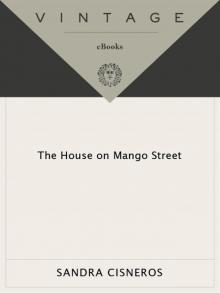 The House on Mango Street
The House on Mango Street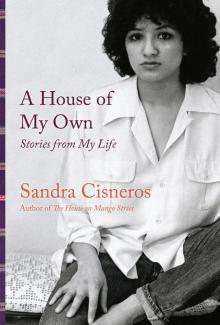 A House of My Own: Stories From My Life
A House of My Own: Stories From My Life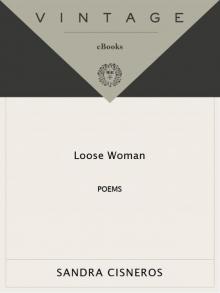 Loose Woman
Loose Woman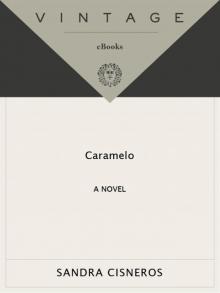 Caramelo
Caramelo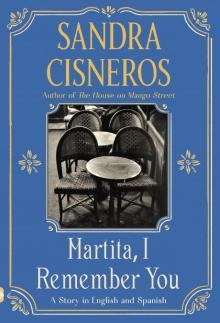 Martita, I Remember You/Martita, te recuerdo
Martita, I Remember You/Martita, te recuerdo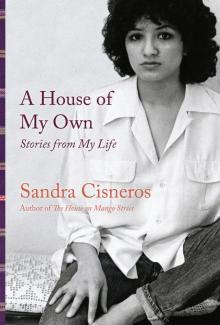 A House of My Own
A House of My Own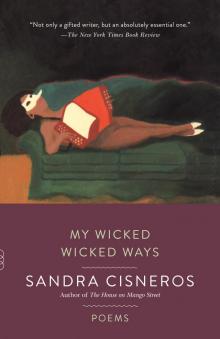 My Wicked Wicked Ways
My Wicked Wicked Ways